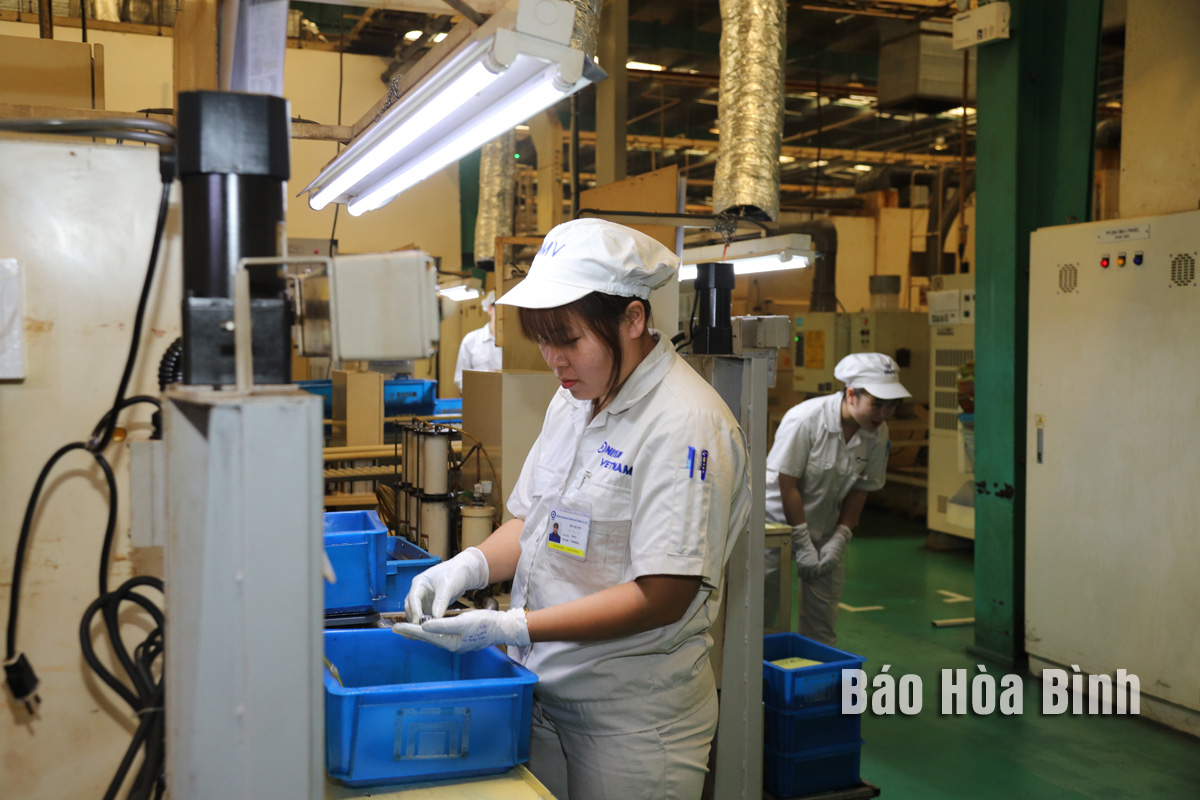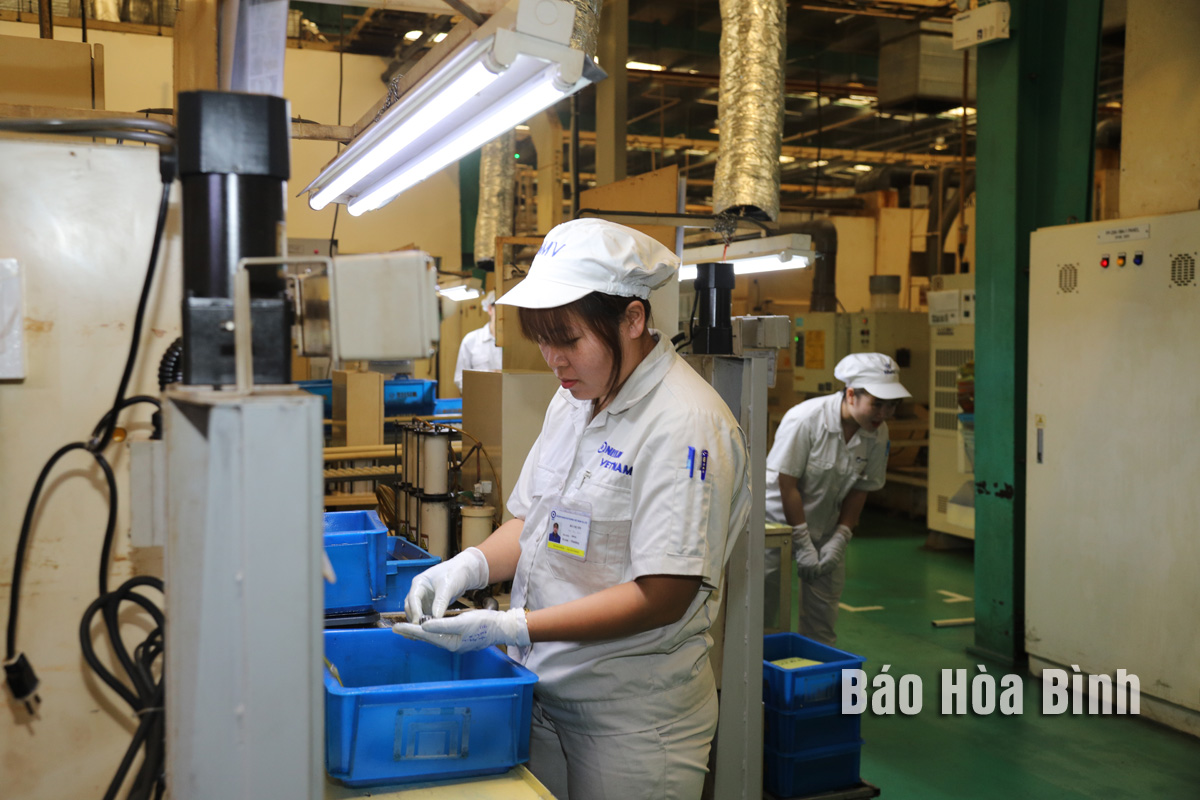
Over the years, businesses located in local industrial parks (IP) have operated stably, completing and exceeding their plan and enjoying growth in revenue, export revenue and State budget payment, while contributing to creating jobs for local labourers.
Workers of Nissin Manufacturing Vietnam at Luong Son IP in Luong
Son district, which is employing nearly 250 labourers with an average income of
9.8 million VND per month.
The motorcycle components factory of Nissin Manufacturing Vietnam Co., Ltd. in
Luong Son IP in Luong Son district officially came into operation in 2014 with
a capacity of producing 23 million products each year.
In 2022, the firm created jobs for nearly 250 labourers who earn 9.8 million
VND (405 USD) each month. It paid 1.776 million USD to the State budget. The
company has shown strong performance in caring for labourers and creating a
friendly working environment for workers.
Luong Son IP is hosting 39 investment projects, including 17 foreign-invested
ones with a combined capital of 230 million USD. The projects have created jobs for about 15,000 labourers, mostly locals, with
an average income of over 6.5 million VND per month.
In the first nine months of this year, companies in the IP reported a revenue
of 13.18 billion VND, and exports of 499.09 million USD, paying 144.66 billion
VND to the State budget. As many businesses in the IP are enjoying exemption of corporate income tax,
the State budget collection in the next three years is expected to far exceed
the current figure.
Meanwhile, businesses in the Da River’s Left Bank IP are also operating stably.
According to the Management Board of Hoa Binh IPs, in the first nine months of
this year, the IP attracted additional three projects, fulfilling 60% of its
plan. Companies in the IP posted a combined revenue of 15.29 trillion VND. They
have created new jobs for 1,032 labourers.
To date, IPs in Hoa Binh have lured 107 projects, including 25 foreign-invested
ones with a total investment of 519.33 million USD, and 82
domestically-invested ones with a combined capital of 15.87 trillion VND.
Chu Van Thang, Director of the Management Board of Hoa Binh IPs, said that this
year, local IPs aim to attract five new projects, earning 22 trillion VND in
revenue and exports of 770 million USD, and creating new jobs for about 1,880
labourers.
To this end, the province has focused on improving the investment and business
environment, while upgrading the infrastructure of local IPs, and preparing
land stocks for investors, Thang said.
According to data from the Hoa Binh Provincial Party Committee, the industrial production index for the first six months of 2025 is estimated to have increased by 20% compared to the same period last year. This marks the highest year-on-year growth rate for this period since 2020.
In the first six months of 2025, Hoa Binh province’s export turnover was estimated at 1.145 billion USD, marking an 18.11% increase compared to the same period in 2024. Import turnover was estimated at $ 804 million, a 17.15% increase, which helped the province maintain a positive trade balance.
The lives of the ethnic minority farmers in Tan Lac district have gradually improved thanks to the new directions in agricultural production. This is a testament to the collective strength fostered through the professional associations and groups implemented by various levels of the district’s Farmers’ Union.
With the motto the "product quality comes first,” after nearly one year of establishment and operation, Muong village’s Clean Food Agricultural and Commercial Cooperative, located in Cau Hamlet, Hung Son Commune (Kim Boi district), has launched reputable, high-quality agricultural products to the market that are well-received by consumers. The products such as Muong village’s pork sausage, salt-cured chicken, and salt-cured pork hocks have gradually carved out a place in the market and they are on the path to obtaining the OCOP certification.
In the past, the phrase "bumper harvest, rock-bottom prices" was a familiar refrain for Vietnamese farmers engaged in fragmented, small-scale agriculture. But today, a new spirit is emerging across rural areas of Hoa Binh province - one of collaboration, organisation, and collective economic models that provide a stable foundation for production.
Maintaining growing area codes and packing facility codes in accordance with regulations is a mandatory requirement for agricultural products to be eligible for export. Recently, the Department of Agriculture and Environment of Hoa Binh province has intensified technical supervision of designated farming areas and packing facilities to safeguard the "green passport" that enables its products to access international markets.



